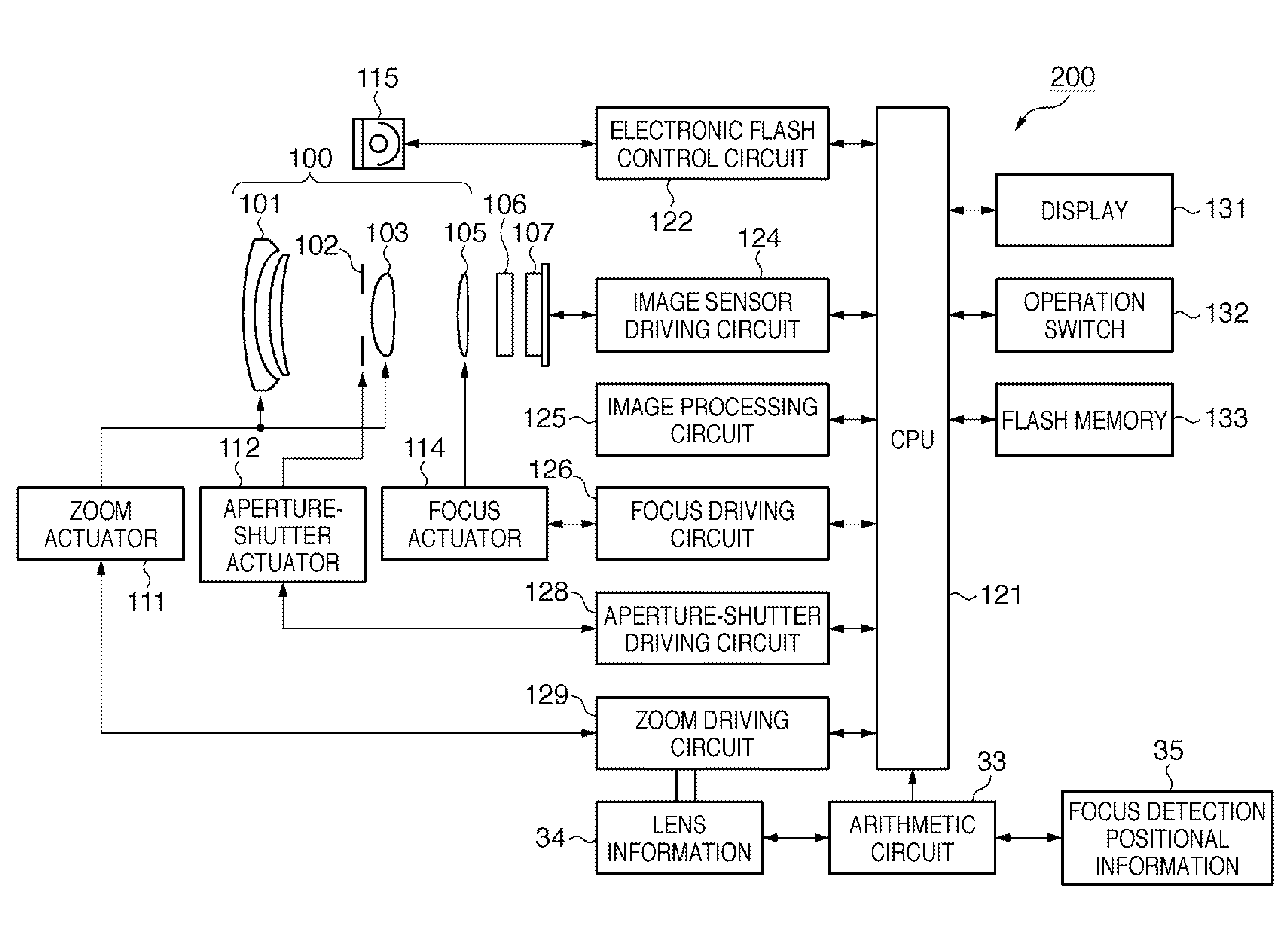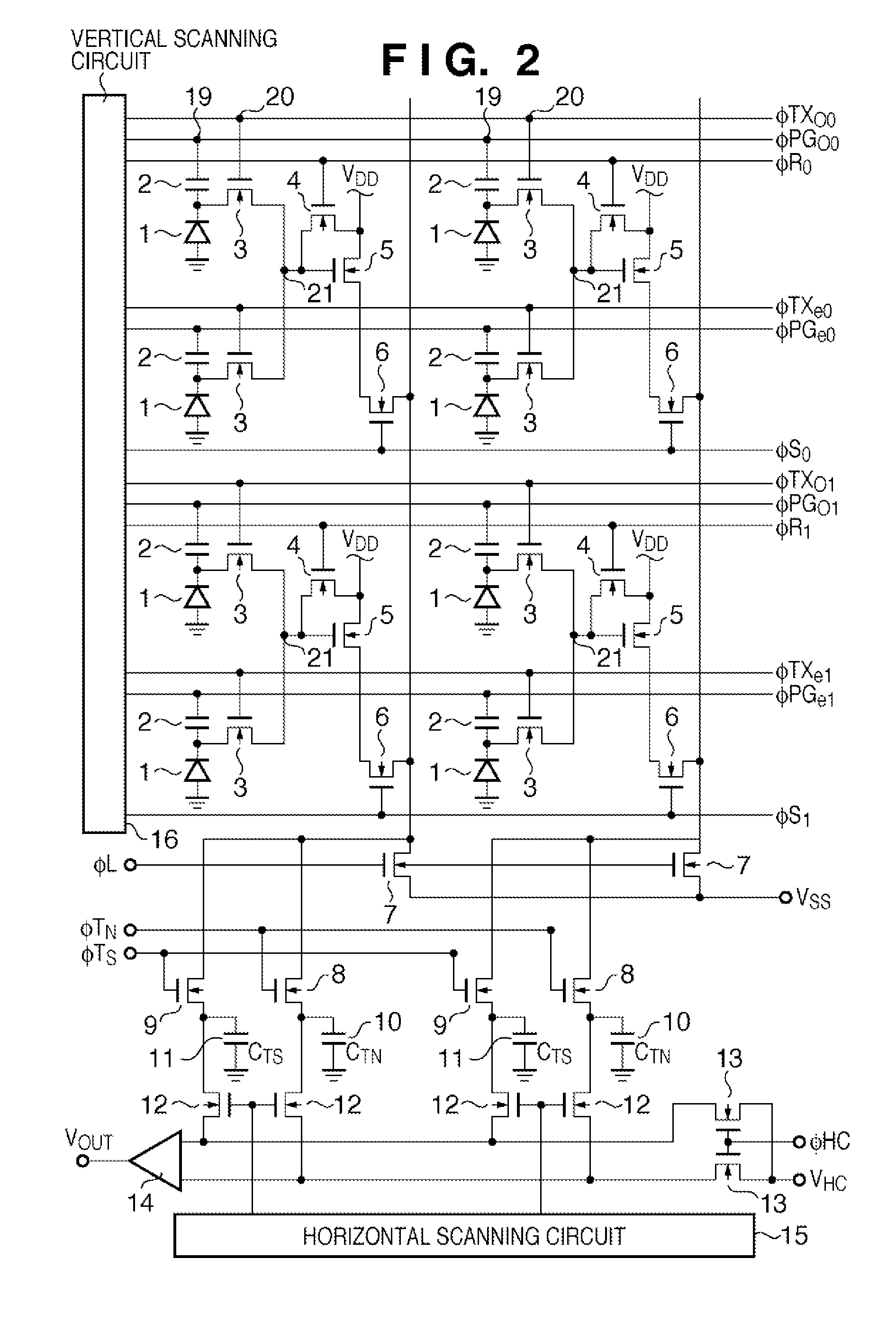Focus detection apparatus and control method therefor
a technology of focus detection and control method, which is applied in the direction of focusing aids, instruments, television systems, etc., can solve the problems of varying the amount of light between the first and second images, and the possibility of distance measurement errors
- Summary
- Abstract
- Description
- Claims
- Application Information
AI Technical Summary
Benefits of technology
Problems solved by technology
Method used
Image
Examples
first embodiment
[0037](First Embodiment)
[0038]FIG. 1 is a block diagram illustrating the configuration of a camera as an example of an optical instrument in the present embodiment.
[0039]In FIG. 1, reference numeral 200 denotes a camera, which is shown as an electronic camera including a camera main body with an image sensor, combined with a photographing lens 100. Reference numeral 101 denotes a first group of lenses disposed at the end of the photographing lens 100, which is held movably in either direction of the optical axis. Reference numeral 102 denotes an aperture-shutter, which both regulates the amount of light for shooting by adjusting its opening diameter and serves as a shutter for adjusting the period of exposure in still image shooting. Reference numeral 103 denotes a second group of lenses. The aperture-shutter 102 and the second group of lenses 103 move together in either direction of the optical axis, and work in conjunction with the first group of lenses 101 moving in either direct...
second embodiment
[0101](Second Embodiment)
[0102]Next, a second embodiment of the present invention will be described. It should be noted that since the entire camera has the same configuration as described in the first embodiment, description of the configuration will be omitted here.
[0103]While the first embodiment described above allows any area to be set as the focusing area depending on an image to be shot, the present embodiment is different from the first embodiment in that the focus detection areas are fixed.
[0104]FIGS. 15A and 15B are diagrams illustrating focus detection areas in the second embodiment of the present invention.
[0105]In FIG. 15A, reference numerals 50-1 to 50-15 denote fifteen fixed focus detection frames, and in FIG. 15B, reference numerals 51-1 to 51-15 denote fifteen fixed focus detection areas.
[0106]In the present embodiment, a case of a fixed focus lens is assumed, or a case is assumed in which the shape of vignetting is not really changed even if the zoom ratio of the l...
PUM
 Login to View More
Login to View More Abstract
Description
Claims
Application Information
 Login to View More
Login to View More - R&D
- Intellectual Property
- Life Sciences
- Materials
- Tech Scout
- Unparalleled Data Quality
- Higher Quality Content
- 60% Fewer Hallucinations
Browse by: Latest US Patents, China's latest patents, Technical Efficacy Thesaurus, Application Domain, Technology Topic, Popular Technical Reports.
© 2025 PatSnap. All rights reserved.Legal|Privacy policy|Modern Slavery Act Transparency Statement|Sitemap|About US| Contact US: help@patsnap.com



